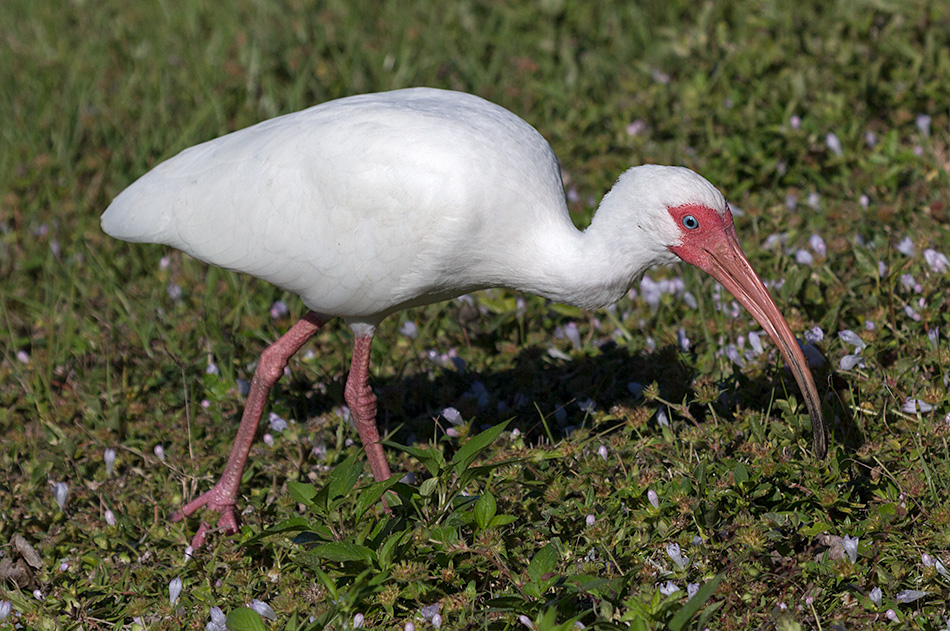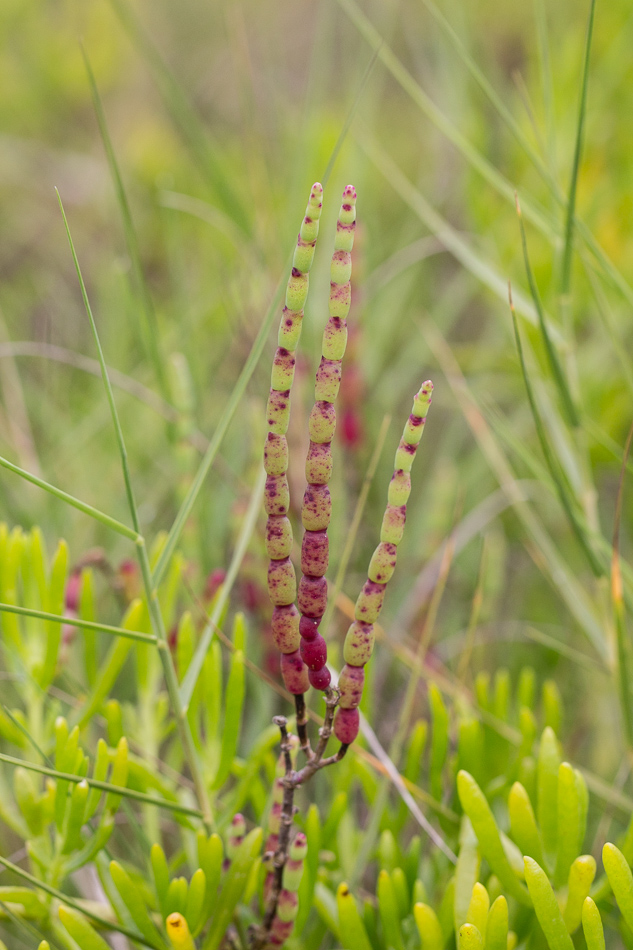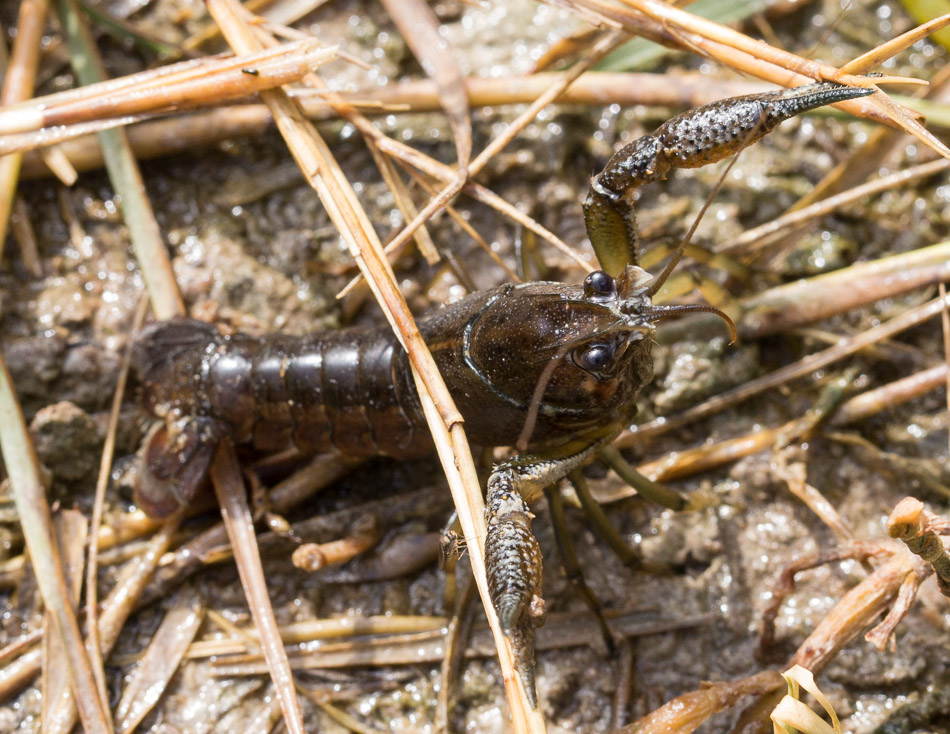Category archives: Adventures
Last night the sky opened up and dumped at least an inch a rain, and this morning the clouds were foreboding and tempestuous as we drove back into Everglades National Park. The sky remained threatening and the wind was a gale off Florida Bay at Flamingo Visitor Center — over 30 miles from the park entrance — so we waited in the car for either the weather or our patience to subside.
Eventually it began to clear and we headed to Christian Point Trail. We didn’t manage to get more than halfway down this one as it was wade-only after a bit.
The trail began through mangroves and through muck which a short boardwalk bridged. (Photo by zanna.)

The water at the start of the trail was this odd umber color. (Photo by quoderat.)
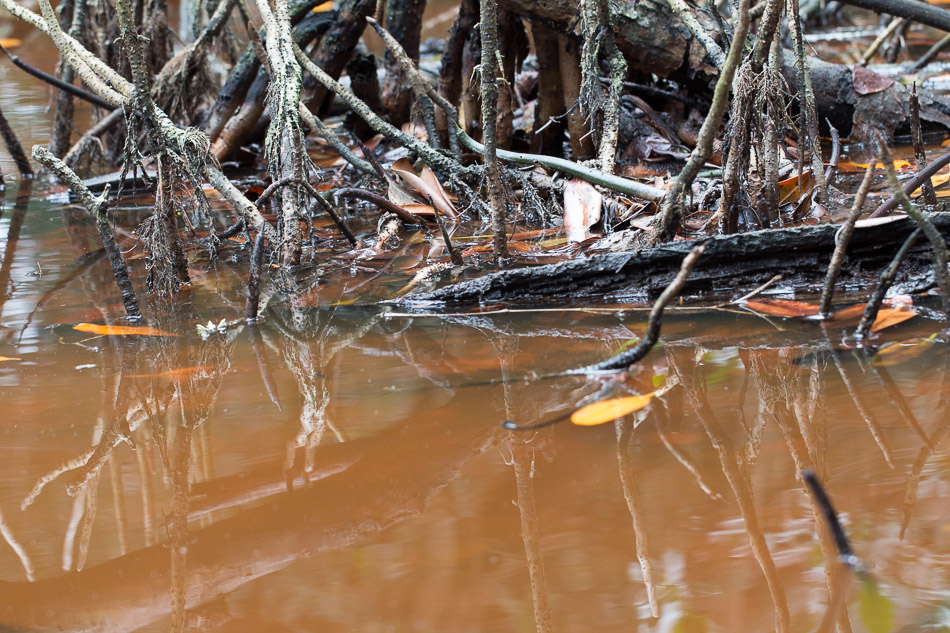
We found this orchid growing on one of the trees. (Photo by quoderat.)

Glasswort was one of the most common plants as the trail passed into wet prairie. (Photo by quoderat.)
This crayfish was crossing the trail ahead of us and raised its claws defensively as we passed. Or perhaps it was just applauding our footwear. (Photo by quoderat.)
We also visited Pahayokee Overlook and its short boardwalk. This really allowed one to see why the Everglades is sometimes called the “Sea of Grass.” (Photo by zanna.)
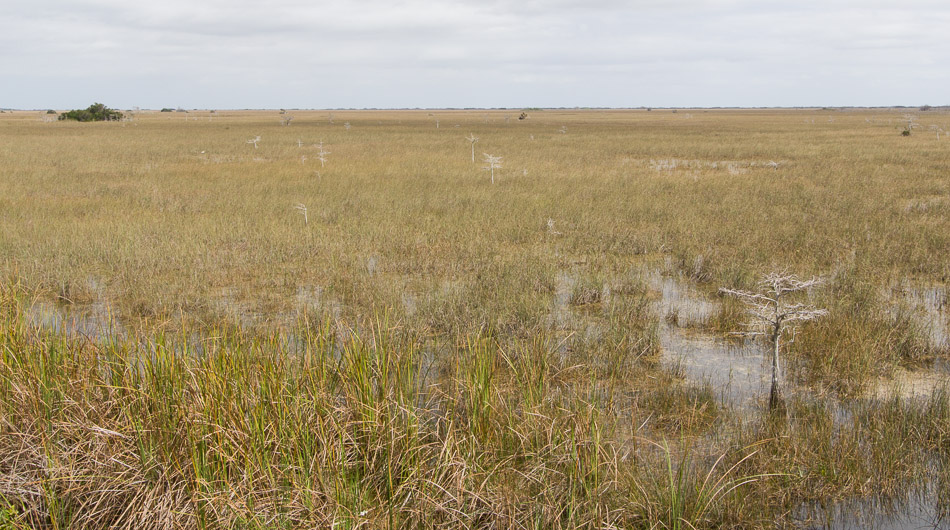
In the Everglades, elevation changes everything. Only a few inches of difference can create a completely altered ecosystem. The dwarf cypress trees in the photo above are almost certainly the same species as in the photo below, and the much smaller ones are likely to be older than their consanguine counterparts that grow taller and much faster in better conditions. (Photo by zanna.)
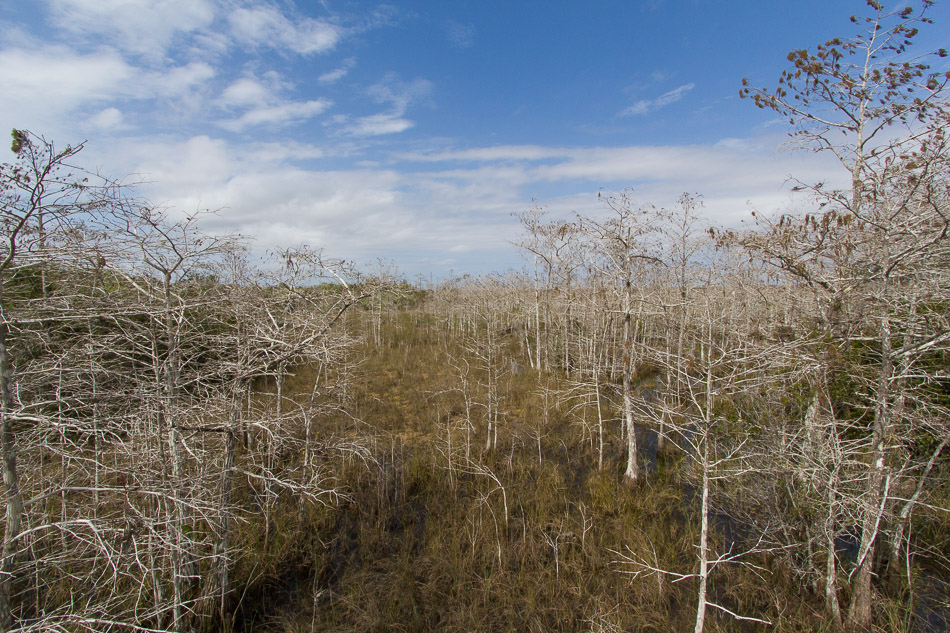
Immediately outside the city areas of greater Miami, the agriculture starts. Lots of squash and tomatoes — the fresh produce that stocks grocery stores in the winter months. A few minutes beyond and you reach Everglades National Park.
As with all of Florida, a few inches difference in elevation completely changes the ecosystem. From the Long Pine Key day use area, the short Three-in-One Trail covers pine rockland, tropical hardwood hammock, and freshwater marsh. As we are here in the dry season, the marsh had no standing water, allowing us to cross the grasses dry-footed to the Long Pine Key Trail.
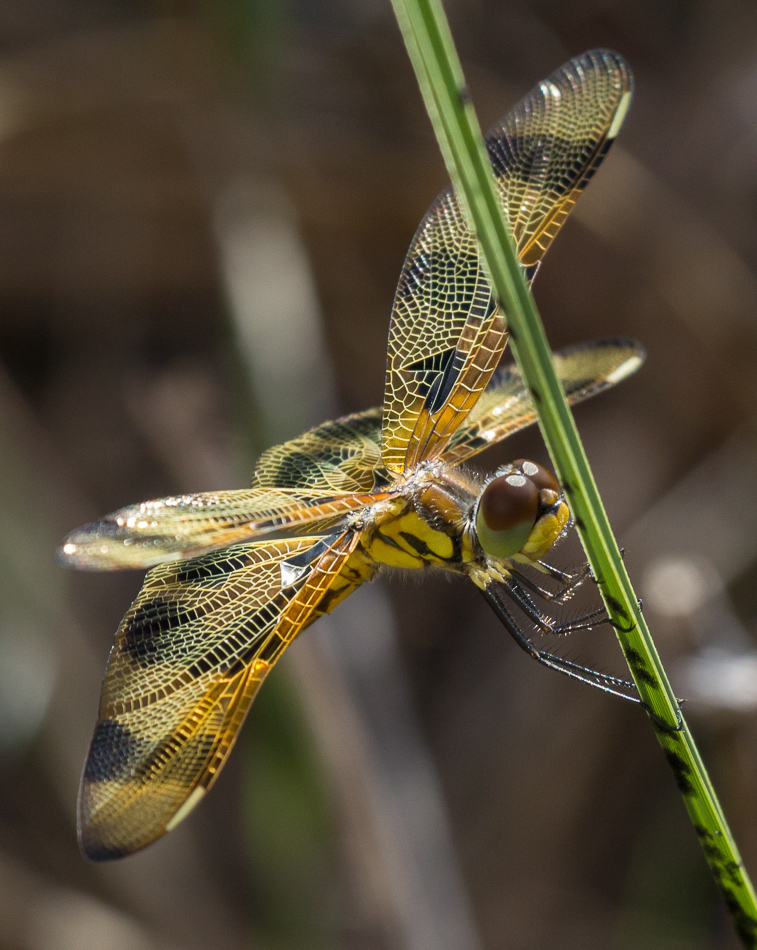
We saw several halloween pennant dragonflies patrolling the marsh grasses and pinelands. (by zanna)
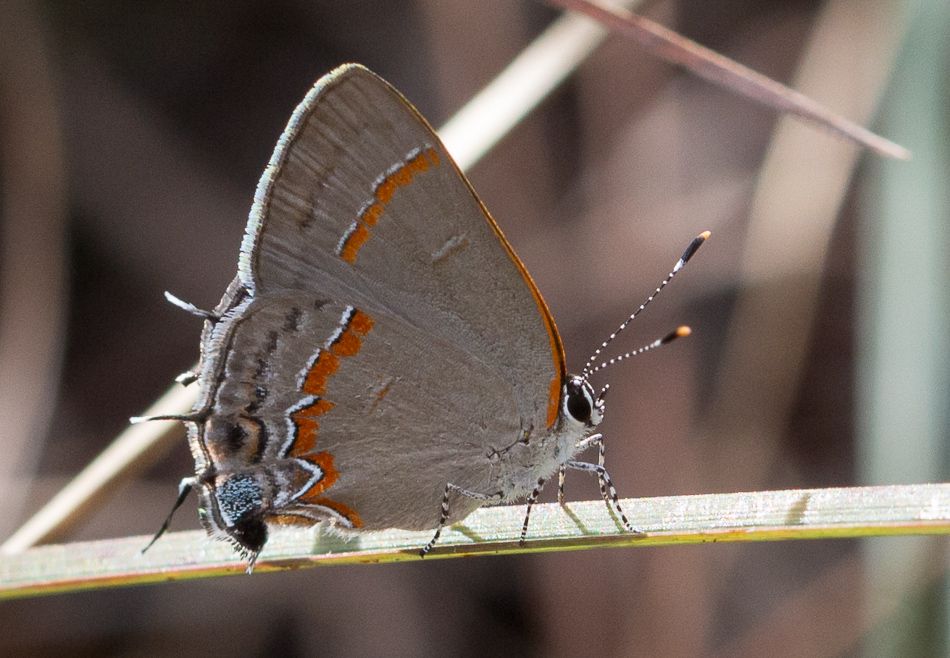
Quoderat spotted and photographed this red-banded hairstreak while I was trying to get more red-breasted woodpecker shots.
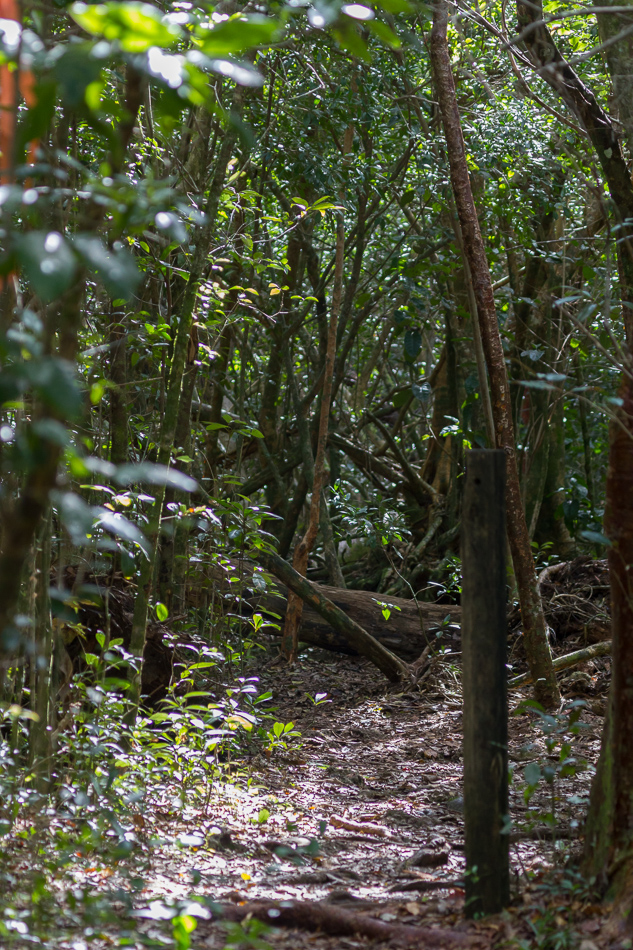
In the dense tropical hardwood hammock, we entered deep shade accompanied by a several degree drop in temperature. (by zanna)
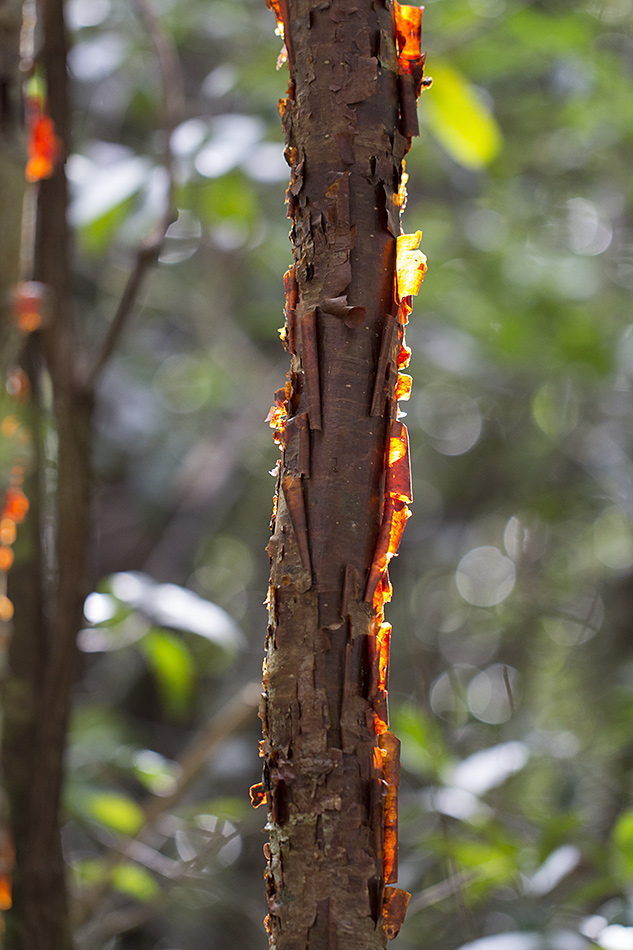
Backlit gumbo-limbo bark. (by quoderat)
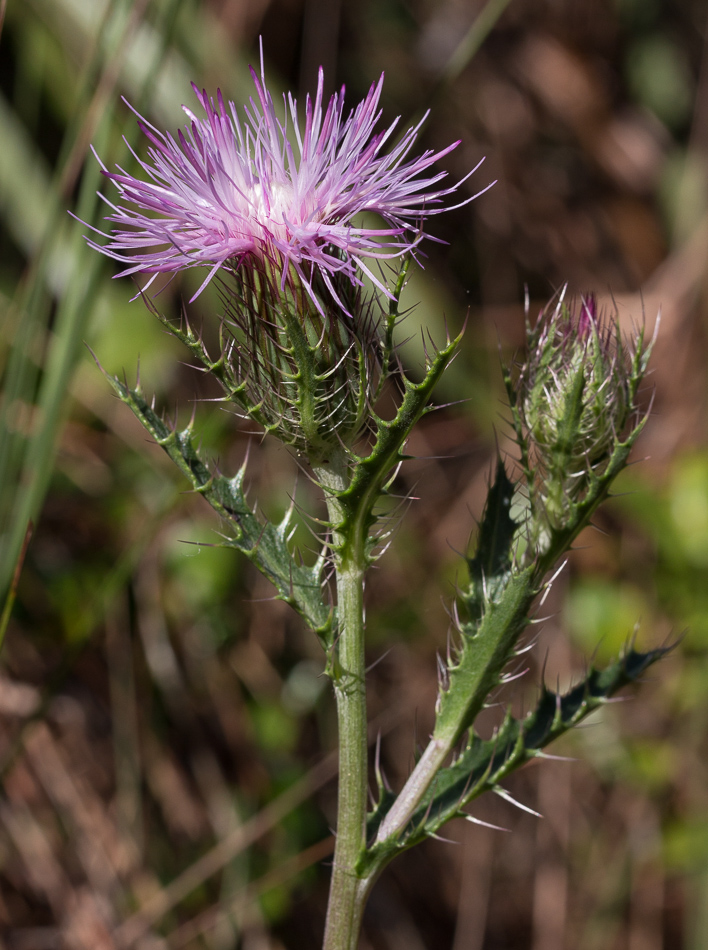
Though thistles are everywhere, we aren’t familiar with this particular kind. (by quoderat)
Ours was the only vehicle when we first pulled into the easy Pinelands trail. Signs explained that the tree snails in the Everglades developed distinct color patterns in isolated hardwood hammocks where they eat lichen in the (even more) humid summer months and estivate (hibernate) through the dry months. In the past, collectors had sometimes burned down hammocks after harvesting the snail shells in order to make their collection more valuable. (by quoderat)
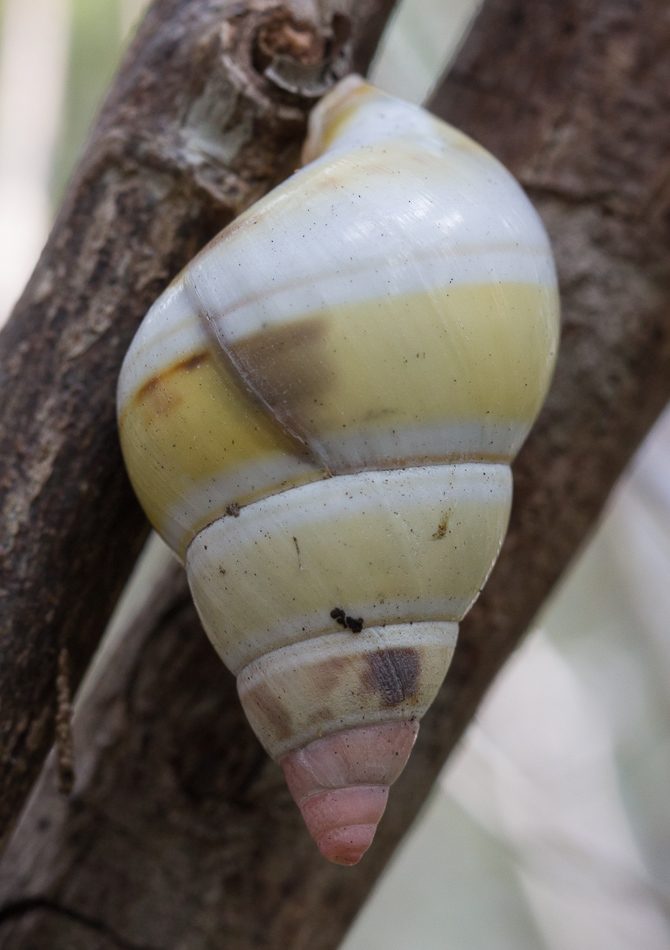
Today was the day of boardwalks. As we drove through the Everglades, we decided to stop at the Kirby Storter boardwalk in the Big Cypress National Preserve to have a look around. Though relatively short, it had a wealth of wildlife.
There isn’t terrain quite like this anywhere else in the US. (Photo by zanna.)

Another interesting swampy area, only a few dozen meters from the wet grassland in the previous image. (Photo by quoderat.)
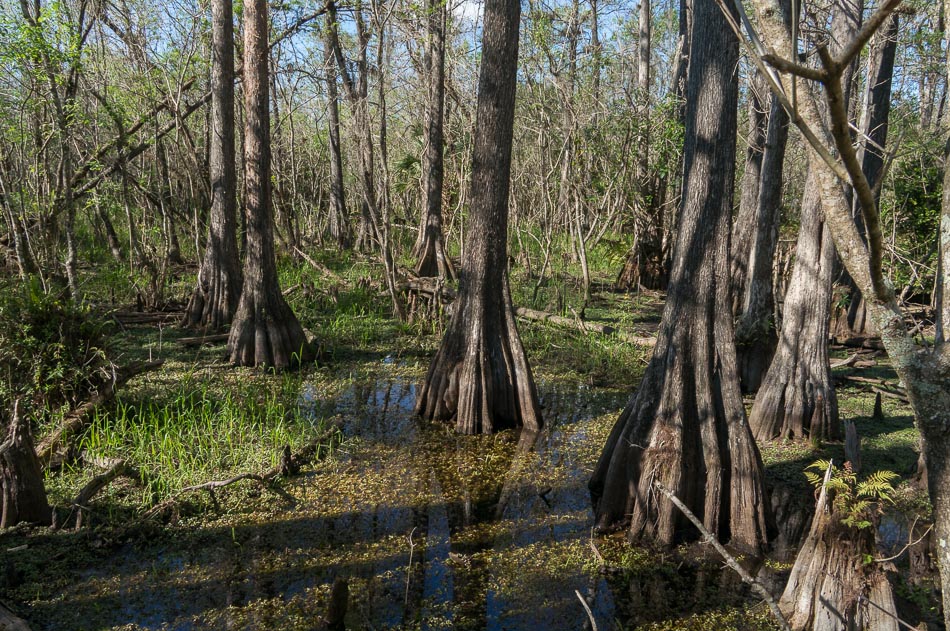
As it is the dry season here, these fish have congregated in one the remaining deeper pools at the end of the boardwalk, waiting for the summer rains to return. There were probably hundreds of fish in a very small area. (Photo by quoderat.)
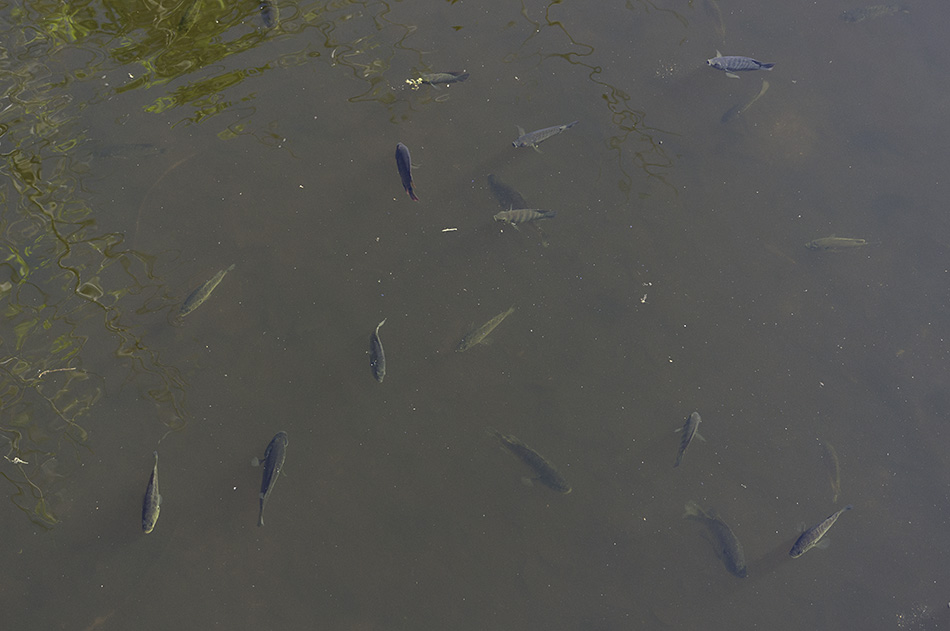
A wood stork was perched over the small pond with all the fish, watching and cleaning its feathers. (Photo by zanna.)
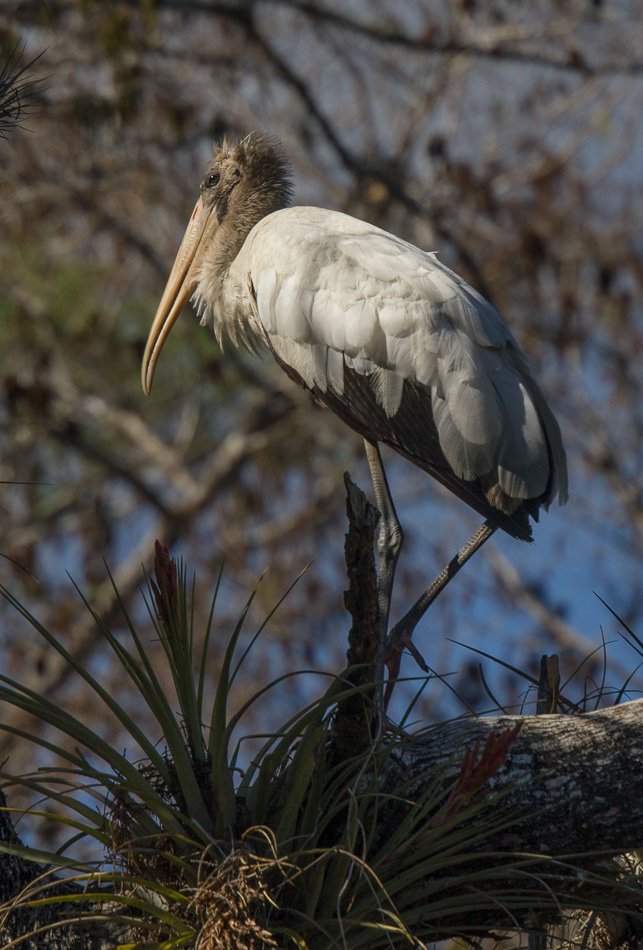
The admission fee was a bit high ($12 per person), but Audubon’s Corkscrew Swamp Sanctuary south of Fort Myers really paid off in the number and variety of birds we spotted.
We saw probably more than a dozen species of birds, some of which we’ve never seen before. We’ve spotted a red-shouldered hawk quite a few times before, but thought this was a pretty good photo (by quoderat).
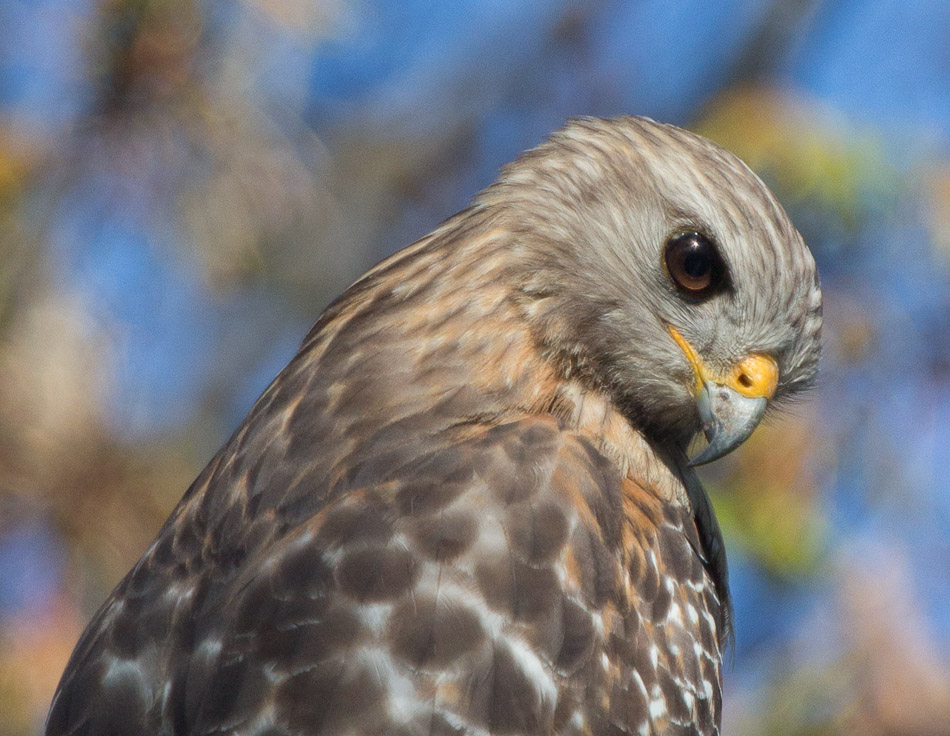
We also saw this small black and white warbler flitting and hopping around like mad, though zanna managed to capture this photo of it eating some bug.
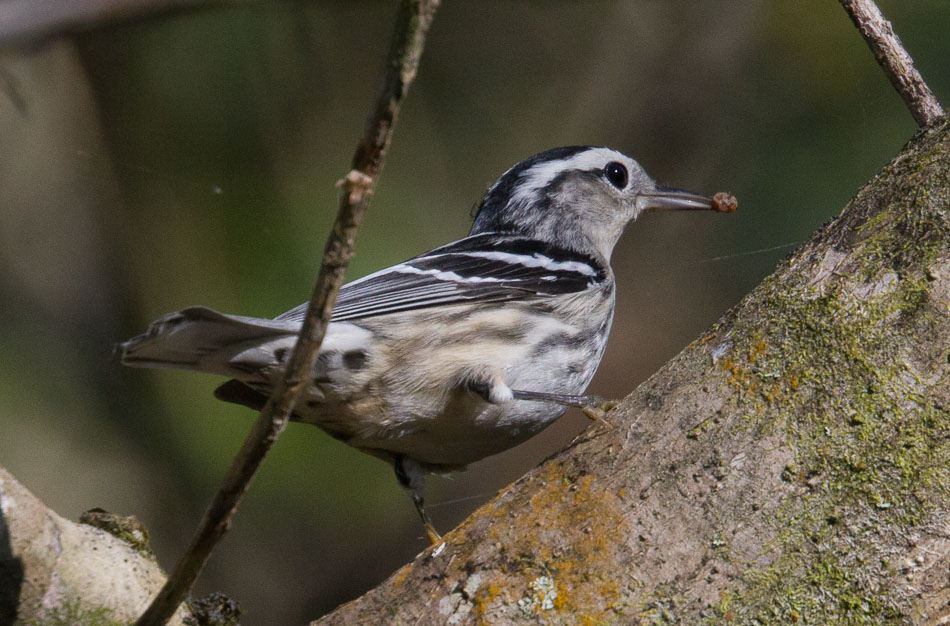
And this little blue heron was also hunting for its meal. (Photo by quoderat).

And this grebe was showing a little excitement. (Photo by zanna.)
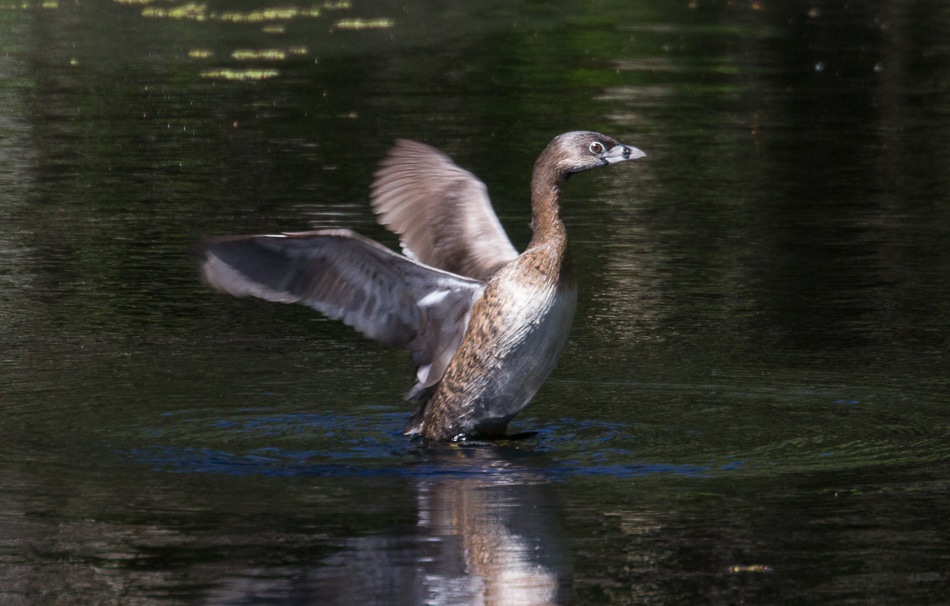
The entire boardwalk itself was around 2.25 miles and passed through a variety of biomes. We thought this was the most interesting. (Photo by zanna.)

As in all of Florida, anywhere there is a few inches of water there are fish. We’re not sure what species these are. (Photo by quoderat.)
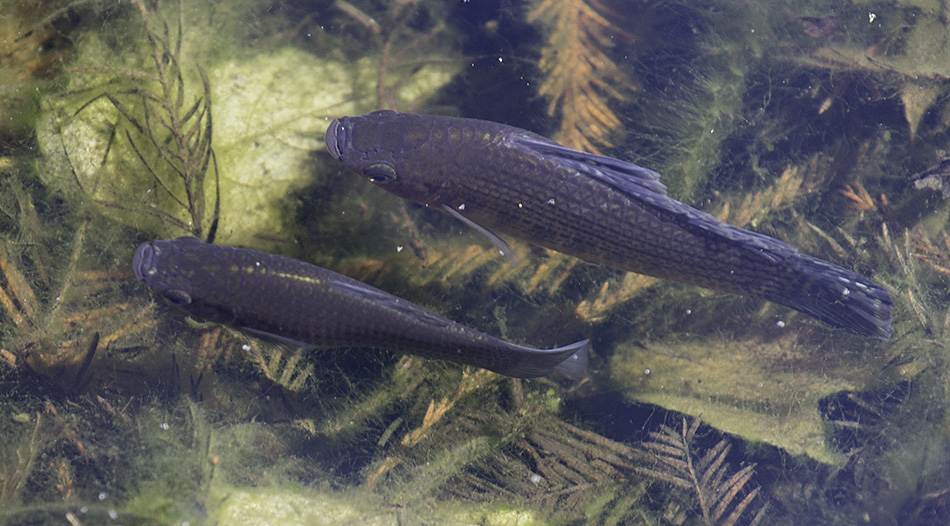
This Dolomedes fishing spider was waiting for some unlucky insect or ichthyoid to pass by. (Photo by quoderat.)

We visited Lee County’s Manatee Park last winter and liked it so much we came back today. Although only 17 acres, the park was thoughtfully laid out to attract all kinds of wildlife. The manatees and other marine animals congregate in winter for the warm water in the discharge canal from the power plant across the street. But there is also a butterfly garden and areas planted for several common Florida habitats. (All pictures are by quoderat except for the pirate manatee, which zanna took. Quoderat also did the photo processing.)
The Gulf of Mexico is starting to warm up again, but there were still lots of manatees and fish in the canal during our visit. The younger manatees surface for air more frequently than the larger ones; perhaps they can’t hold their breath as long yet. Many of the older manatees have propeller scars on their backs. They seem so relaxed, drifting up to the surface, raising their nose just into the air, and then drifting back down with a wave of their broad tale.
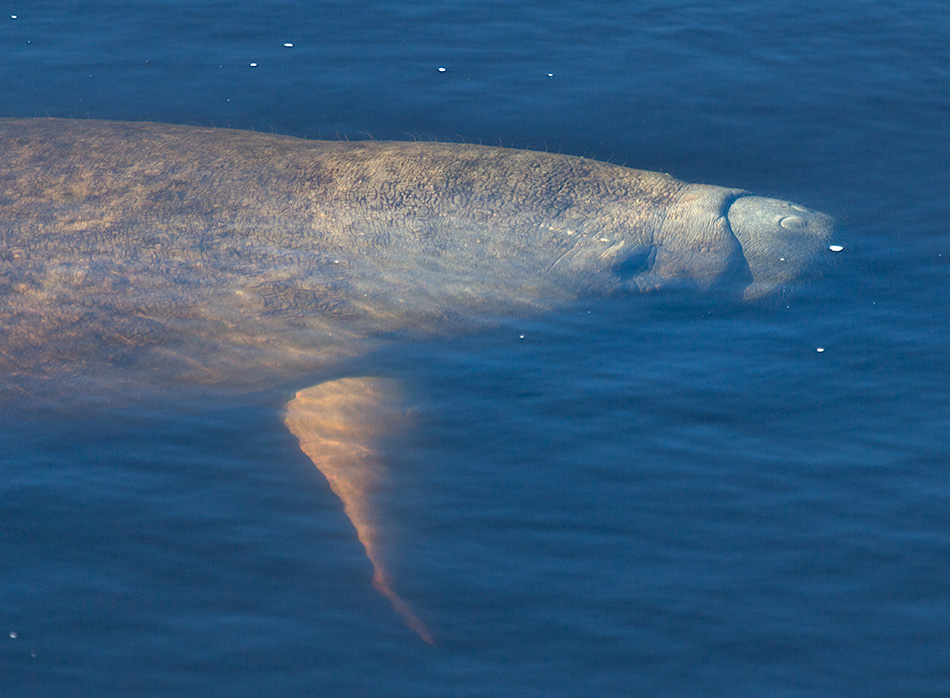

There is a fenced walkway that runs the length of the canal, letting the humans get close enough to watch, but not bother the manatees. There are lots of informative signs describing manatee behavior and biology along the path. Here is the donations box:
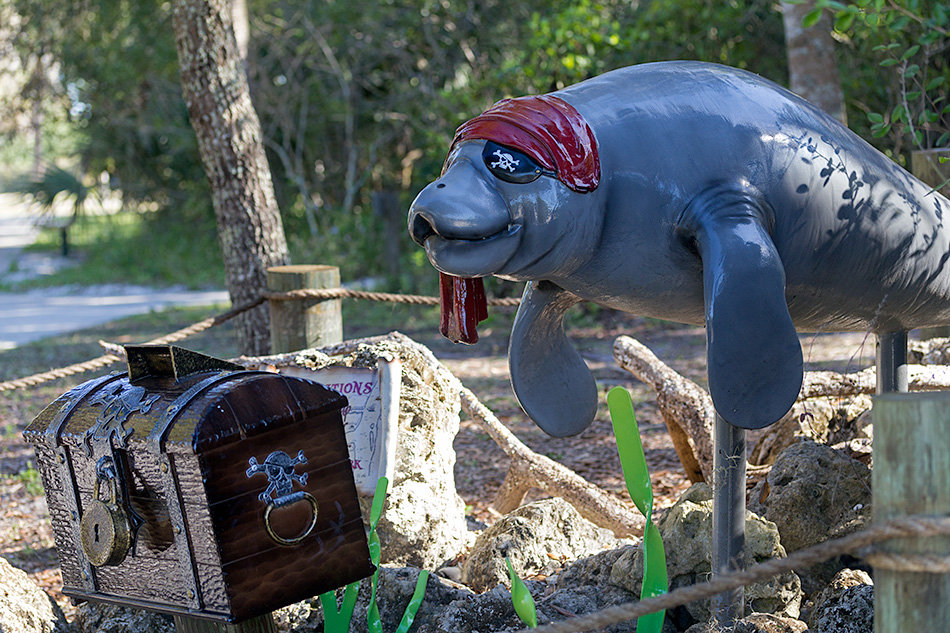
There was a huge old tarpon in the canal as well, probably over five feet long. It didn’t come near the surface of the water often, so it didn’t get its picture taken. Neither did the leaping mullet. This school of gar fish did though.
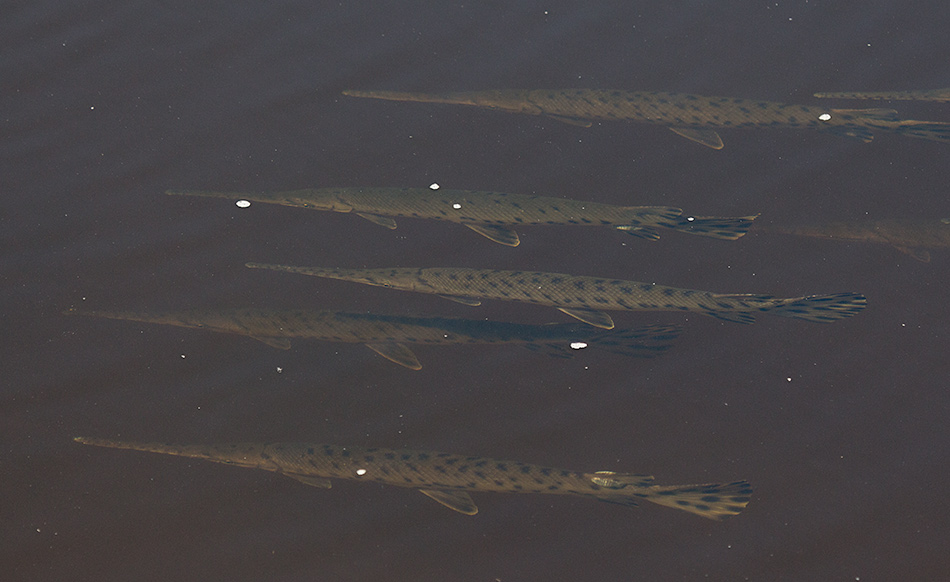
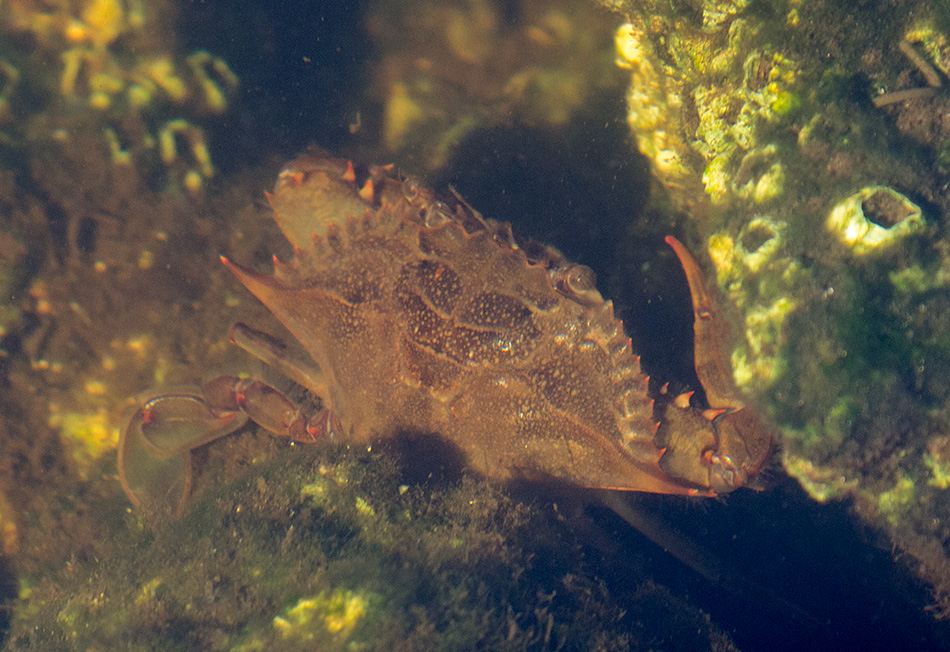
There are lots of birds at the park as well. This red-bellied woodpecker seemed interested in a bee flying around this tree’s flowers.
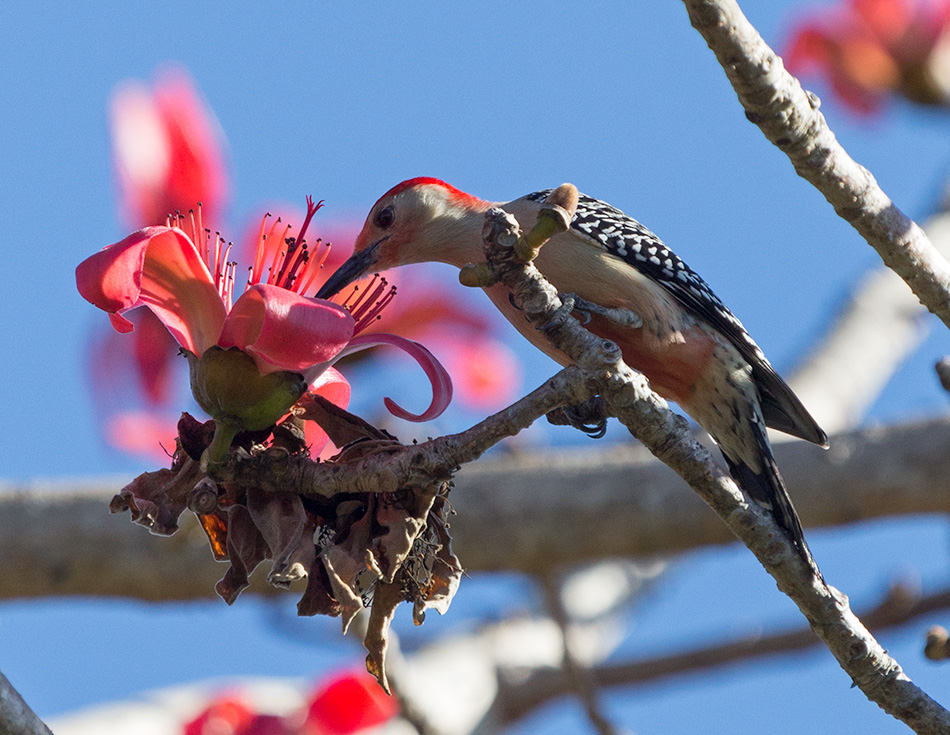
White ibis, common in Florida, but always striking with their bright salmon colored skin and blue eyes.
